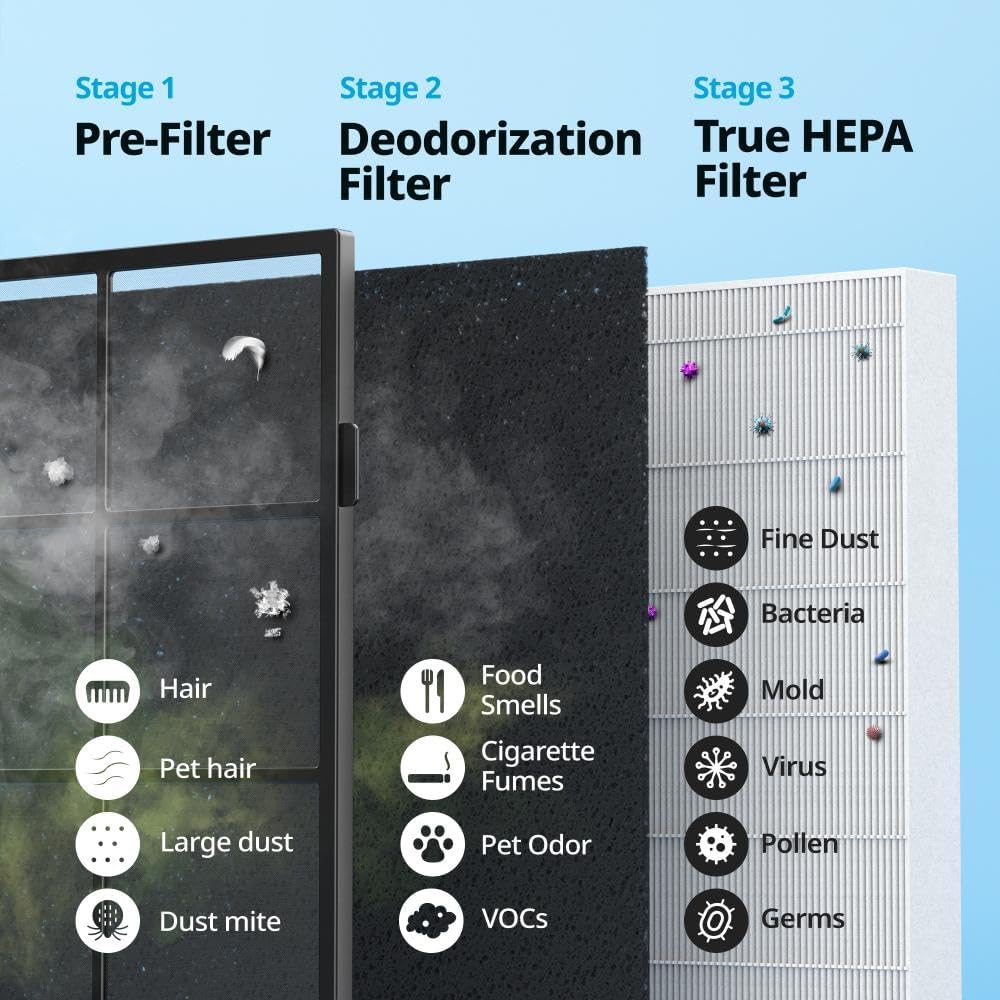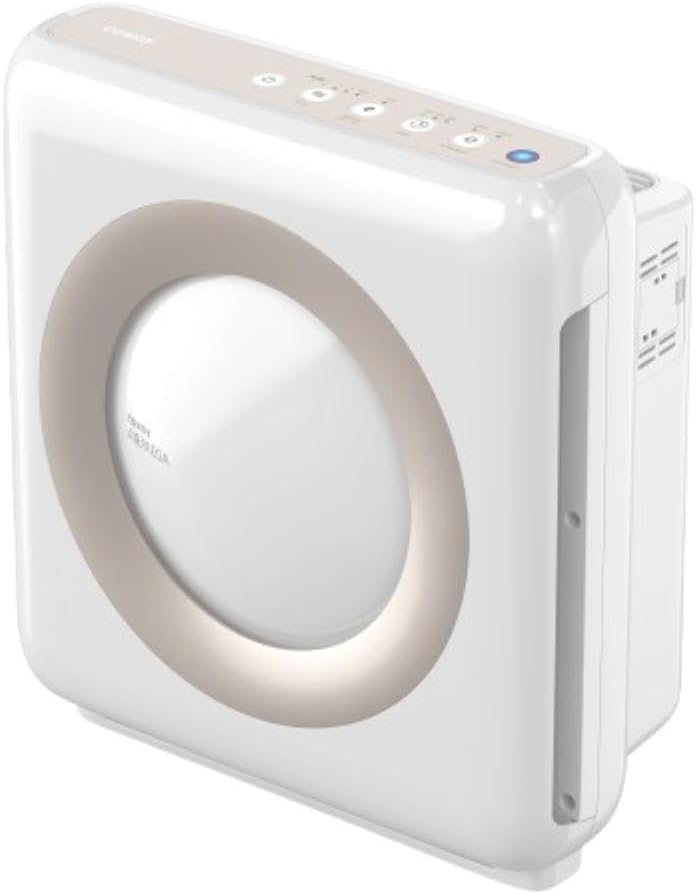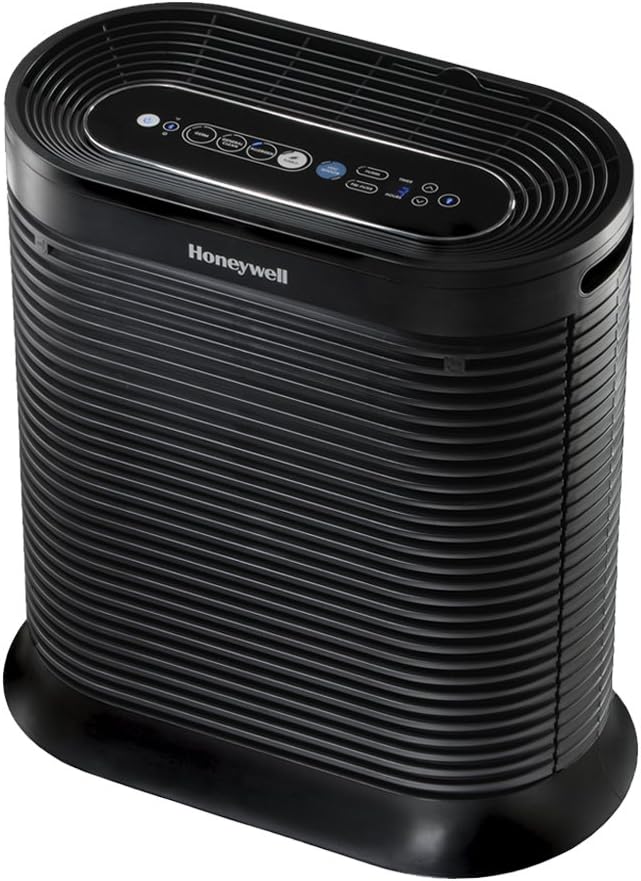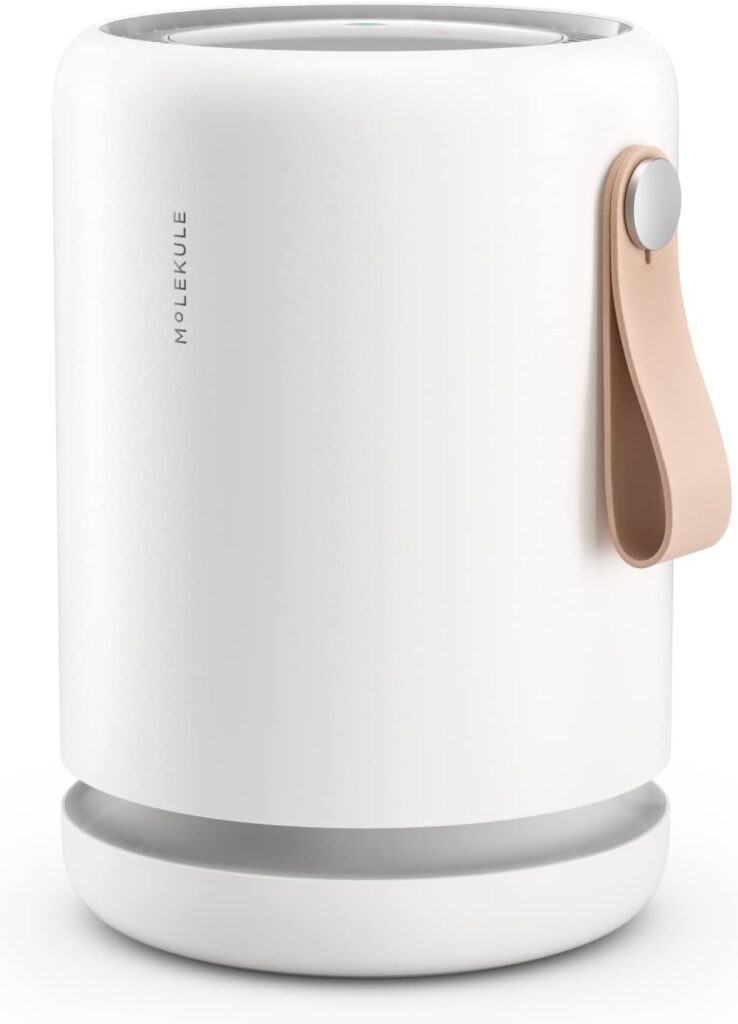5 Best True HEPA Air Purifiers for Bedrooms (2025 Review)
HEPA air purifiers transform bedroom air quality like nothing else. That stuffy nose when you wake up? Those morning sneezing fits? The layer of dust that seems to reappear on your nightstand daily? A quality bedroom air purifier can eliminate all of these problems.
Most people don’t realize they’re breathing contaminated air for 7-8 hours every night until they sleep with a purifier. The difference is immediate and often profound. We spend roughly a third of our lives in our bedrooms, so clean air while you sleep isn’t just a luxury—it’s essential for your health and wellbeing.
Jump to the top HEPA air purifiers here.
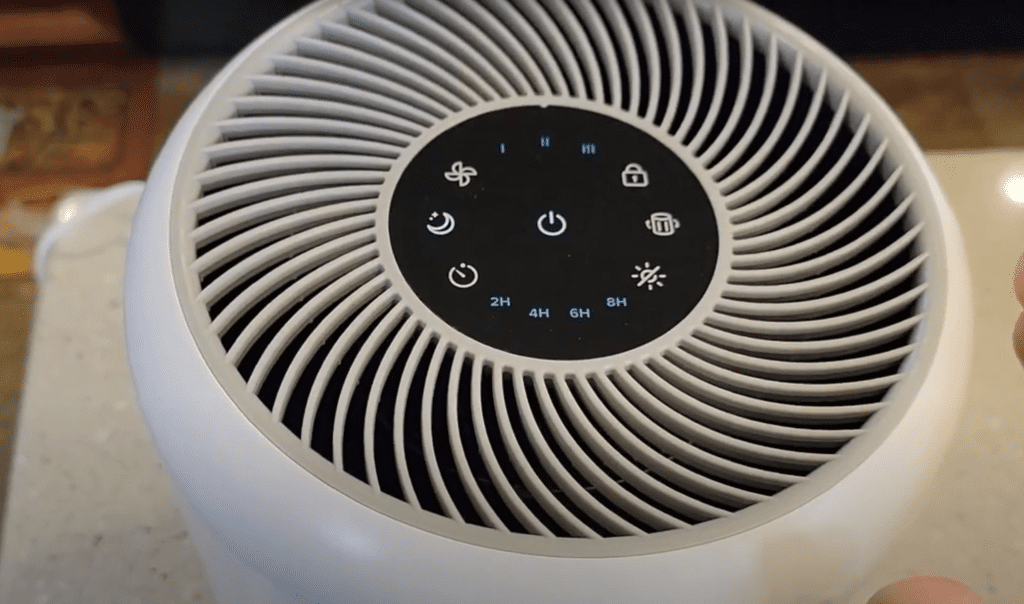
Disclosure: As an Amazon Associate I may earn a small commission for qualifying purchases at no additional cost to you.
Why Your Bedroom Desperately Needs True HEPA Filtration
Ever cleaned your bedroom only to find it dusty again the next day? That’s because standard cleaning can’t capture what’s constantly floating in your air.
True HEPA filters capture an astonishing 99.97% of microscopic particles as small as 0.3 microns – particles so tiny they’re invisible but can still irritate your lungs and trigger allergies.
Users are often shocked when they open their filters after several months of use. Many report being amazed at the amount of dust, dirt, pet hair, and even their own hair strands captured by the purifier – material that would otherwise have been floating in their air and entering their lungs.
A True HEPA filter removes:
- Pet dander that triggers midnight sneezing fits
- Dust mites hiding in your bedding
- Pollen that sneaks in through windows
- Smoke particles from cooking or neighbors
- Mold spores that can cause respiratory issues
Don’t be fooled by “HEPA-type” filters. Only True HEPA certification guarantees hospital-grade filtration proven to help you breathe easier while you sleep.
Top 5 HEPA Air Purifiers for Better Sleep in 2025
After analyzing and comparing dozens of bedroom air purifiers for filtering efficiency, noise levels, and overall user satisfaction, we’ve narrowed down the best options that actually deliver cleaner air and better sleep.
Here are the winners that will help you breathe – and sleep – better tonight.
1. Best Overall – Coway AP-1512HH Mighty Air Purifier
The Coway AP-1512HH Mighty is a compact yet powerful air purifier perfect for bedrooms. Its four-stage filtration system includes a pre-filter, activated carbon filter, True HEPA filter, and an optional ionizer.
Many describe the air as feeling lighter, crisper, and easier to breathe – a difference you can actually feel. It’s not only our top pick—it’s backed by thousands of users who’ve experienced dramatic improvements in their sleep quality and allergy symptoms.
Why It’s Perfect For Your Bedroom:
- Just Right Size: Compact enough to fit beside your nightstand but powerful enough for rooms up to 361 sq ft
- Whisper-Quiet Operation: As low as 24.4 dB on the lowest setting—many users report keeping it on all night without sleep disruption
- Smart Auto Mode: Automatically detects cooking odors, smoke, or pet dander even from other rooms and adjusts accordingly
- Real Results for Allergy Sufferers: Users with pet allergies report that their symptoms decrease significantly within minutes of turning on this purifier
- Eco Mode: Automatically turns off the fan when no pollution is detected for 30 minutes, saving energy
- Easy to Maintain: Filter replacement indicators tell you exactly when maintenance is needed
What makes the Coway special is how quickly it transforms your air. Many users report feeling the difference after just one night—stuffiness gone, breathing easier, and waking more refreshed.
2. Best for Small Bedrooms & Light Sleepers – Levoit Core 300 Air Purifier
The Levoit Core 300 offers excellent performance at a budget-friendly price point. Its cylindrical design allows for 360-degree air intake, efficiently cleaning your bedroom air.
Why Light Sleepers Love It:
- Ultra-Quiet Operation: The QuietKEAP Technology keeps noise levels as low as 24 dB—quieter than a whisper
- Perfect for Small Bedrooms: Ideal for spaces up to 219 square feet like apartments, dorms, or guest rooms
- Sleep-Friendly Features: Display off function eliminates disruptive lights that can interrupt your sleep
- Customizable Filtration: Choose specialized filters for specific concerns like pet allergies or household odors
- Timer Settings: Set it to run for exactly the amount of time you need
- Compact Footprint: The 360° air intake design means it can be placed almost anywhere in your bedroom
For apartment dwellers or anyone with limited space, the Core 300’s cylindrical design is a perfect fit. It’s powerful enough to make a noticeable difference in air quality without dominating your bedroom décor or your budget.
3. Best for Large Bedrooms – Blueair Blue Pure 211+ Air Purifier
For master bedrooms and larger spaces, the stylish Blueair Blue Pure 211+ delivers powerful filtration with a touch of design flair.
Key Features:
- Coverage Area: Handles up to 540 square feet with ease
- Filtration System: Includes washable pre-filter plus particle and carbon filtration
- Operation: Simple one-button design for hassle-free use
- Odor Removal: Exceptional activated carbon filter for eliminating smells
- Energy Consumption: Energy-efficient despite powerful performance
The Blue Pure 211+ stands out for its high CADR (Clean Air Delivery Rate) and energy efficiency, making it ideal for continuous use in larger sleeping spaces. The simple one-button operation makes it easy to use, even when you’re groggy or half-asleep.
It also comes with customizable fabric pre-filters that add a pop of color while extending the life of the main filters. Its activated carbon layer excels at removing bedroom odors, creating a fresh sleeping environment.
Despite its powerful performance, the Blue Pure 211+ operates quietly, with noise levels ranging from 31 to 56 dB depending on the fan speed. This makes it suitable for use throughout the night without disturbing your sleep.
4. Best for Allergies – Honeywell HPA-250 True HEPA Air Purifier
The Honeywell HPA-250 combines powerful HEPA filtration with smart connectivity, making it an excellent choice for tech-savvy users who want precise control over their bedroom air quality – especially with allergies.
Why It’s Perfect For Your Bedroom:
- Smart Connectivity: Control through iOS or Android app for customized scheduling and settings
- Effective Coverage: Purifies rooms up to 310 square feet—ideal for most bedrooms
- True HEPA Filtration: Captures up to 99.97% of microscopic allergens, including dust, pollen, and pet dander
- Odor Reduction: Activated carbon pre-filter helps eliminate household smells and VOCs
- Automatic Timer: Program 1-18 hour auto shut-off for energy savings
- Energy Star Certified: Operates efficiently despite powerful performance
What makes the Honeywell HPA-250 stand out is its ability to integrate with your smartphone for personalized air quality management. Users particularly appreciate the ability to adjust settings remotely and set automatic schedules based on their sleep patterns or allergy conditions.
The unit operates quietly on lower settings, making it suitable for nighttime use, while still having enough power to quickly clear allergens when needed. Allergy sufferers report significant improvement in symptoms, especially when used consistently in the bedroom.
5. Best Advanced Technology – Molekule Air Mini+ Air Purifier
The Molekule Air Mini+ takes a different approach to air purification, using Photo Electrochemical Oxidation (PECO) technology alongside traditional filtration.
Key Features:
- Coverage Area: Perfect for bedrooms up to 250 square feet
- Technology: PECO technology destroys pollutants at molecular level
- Smart Features: Auto Protect mode adjusts to detected air quality
- Design: Sleek, modern aesthetic that complements bedroom decor
- Connectivity: Smartphone app for remote control and monitoring
- Quiet operation with noise levels as low as 39 dB to minimize sleep disruption
Unlike traditional purifiers that only trap pollutants, the Molekule claims to destroy them at a molecular level, including VOCs, bacteria, viruses, and mold. Its elegant design and quiet operation make it a premium choice for tech-savvy users seeking cutting-edge air purification.
How to Choose the Perfect Bedroom Air Purifier: 7 Essential Factors
1. Match the Purifier to Your Bedroom Size
Always check the purifier’s recommended coverage area against your bedroom’s square footage. Using a purifier that’s too small will result in inadequate air cleaning, while an oversized unit may be unnecessarily loud and expensive to operate.
Pro Tip: If you have high ceilings or severe allergies, choose a purifier rated for a space 20% larger than your actual room size.
2. For Light Sleepers: Look out for Noise Levels
Look for purifiers with quiet operation modes, ideally below 30 dB for nighttime use. Many purifiers offer many fan speeds, with the lowest speed being the quietest.
Consider models with sleep modes or night modes that reduce both noise and light output.
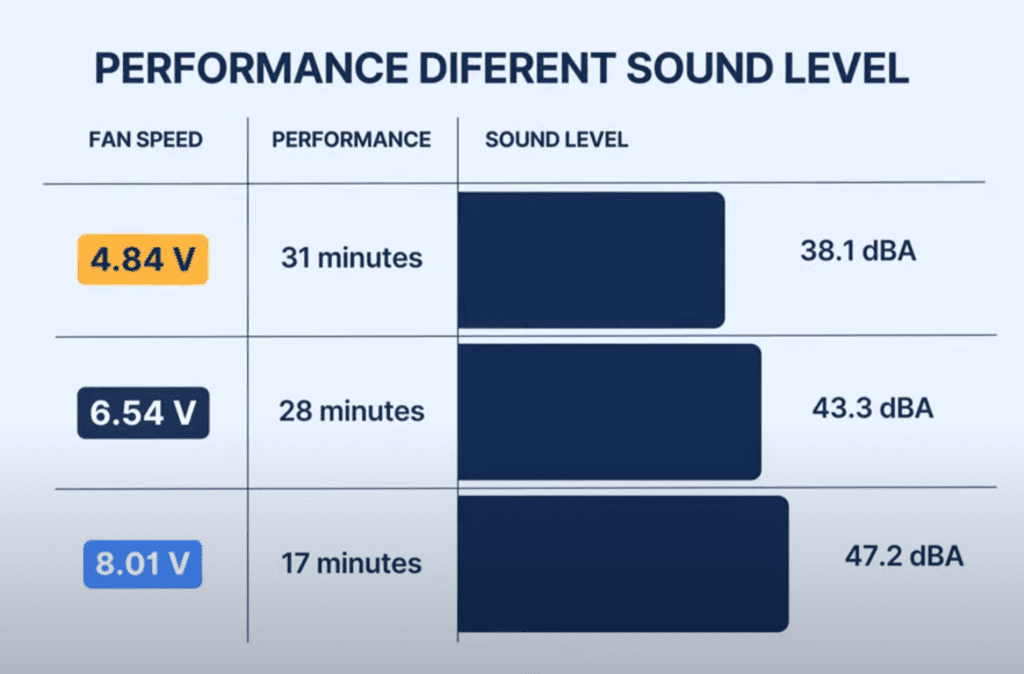
Keep in mind that even a consistent, low-level white noise can be soothing for some sleepers. If you’re sensitive to noise, prioritize models known for their quiet operation.
Pro Tip: Noise-sensitive users suggest running your purifier on high for an hour before bed to clean the air, then switching to low before sleeping for clean air without disruptive noise.
3. The Hidden Costs That Can Double Your Investment
Remember that filters of your new air purifier need regular replacing. Here’s what you need to know:
Filter Replacement:
- Most manufacturers recommend HEPA filter replacement every 12 months
- Real-world experience? Many users report needing changes at 6 months, especially with:
- Pets in the home
- Smoking households
- Urban environments
- Homes with cooking odors
What This Means For Your Wallet:
- Coway Mighty filters: ~$50-70 annually
- Levoit Core 300 filters: ~$30-50 annually
- Blueair filters: ~$70-120 annually
Energy Consumption Matters Too:
- Look for Energy Star certification (the Coway Mighty has this)
- Eco mode features can cut energy use by 50% or more
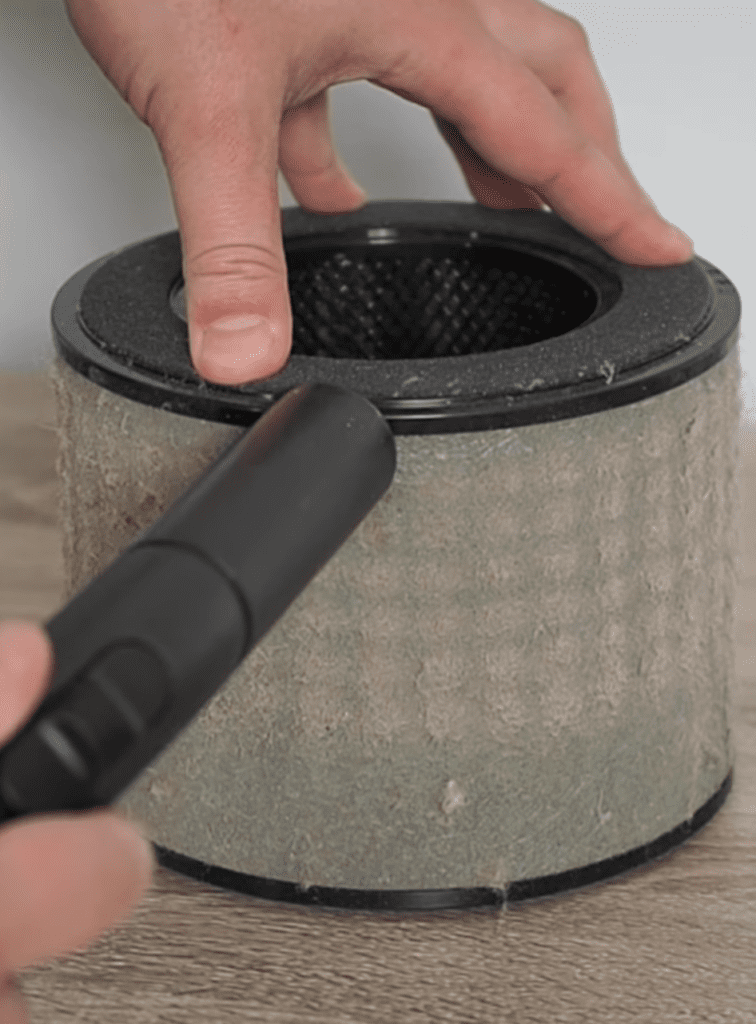
Pro Tip: Many experienced users recommend vacuuming the pre-filter monthly to extend the life of your more expensive HEPA and carbon filters. This small maintenance task takes just minutes and can save significant money over time.
4. Look for Sleep-Enhancing Smart Features
Modern air purifiers offer features that can significantly improve your sleep experience:
- Air quality sensors that provide real-time feedback
- Auto modes that adjust to changing conditions without waking you
- Scheduling options to increase filtration before bedtime
- Display-off settings to eliminate light pollution
5. Verify Energy Efficiency Ratings
Look for Energy Star certification to ensure your purifier won’t drive up electricity bills. Energy-efficient models are especially important for bedroom purifiers that typically run all night or even 24/7.
6. Address Your Specific Air Quality Concerns
Different purifiers excel at different aspects of air cleaning:
- For urban environments: Check for strong performance against PM2.5 particles
- For allergies: Prioritize high CADR ratings for pollen and dust
- For pet owners: Look for strong odor control and specialized pet filters
- For chemical sensitivities: Ensure robust activated carbon filtration
7. Consider Noise and Light Sensitivity
If you’re a light sleeper, look for:
- Night modes that dim or turn off display lights
- Ultra-quiet operation on lowest settings
- Smooth, consistent fan sounds rather than fluctuating noise
How to Maximize Your Bedroom Air Purifier’s Effectiveness
Optimal Placement for Maximum Air Cleaning
Position the purifier where it can circulate air effectively, usually 3-5 feet off the ground. Avoid placing it in corners or behind furniture where airflow might be restricted. For optimal performance, place the purifier near the head of your bed, allowing it to deliver clean air directly to your breathing zone.
Ensure there’s enough clearance around the purifier for proper air intake and output. Most models need at least a foot of clear space on all sides.
Create a Sealed Environment for Better Results
Keep doors and windows closed while the purifier is running. This helps the purifier maintain clean air within the room and prevents outdoor pollutants from entering.
If you enjoy fresh air, consider opening windows for a short period during the day and then running your purifier to clean the air before bedtime.
Maintain Consistent Operation for Cleaner Air
For best results, operate your air purifier 24/7, using lower speeds at night for quieter operation. Continuous operation helps maintain consistently clean air and prevents pollutants from accumulating.
Many modern purifiers are designed for energy-efficient continuous use.
If running your purifier constantly isn’t possible, aim to have it on for at least an hour before bedtime and throughout the night. This confirms you’re breathing the cleanest air possible while you sleep.
Follow Regular Maintenance for Peak Performance
Change filters as recommended and clean external surfaces to confirm optimal performance. Set reminders for filter changes based on the manufacturer’s recommendations or the purifier’s filter life indicators.
Regularly vacuum or wipe down the exterior of the purifier to prevent dust buildup. For models with washable pre-filters, clean these components according to the manufacturer’s instructions to maintain efficiency and extend the life of the main filters.
Comprehensive Air Quality Management
Use your air purifier alongside other strategies for comprehensive air quality management. Regular cleaning, including vacuuming with a HEPA-filtered vacuum and dusting with microfiber cloths, can significantly reduce the load on your air purifier.
Consider using dust-mite covers on your mattress and pillows to reduce allergens in your sleeping area. Control humidity levels in your bedroom, aiming for 30-50% relative humidity, to discourage mold growth and dust mite proliferation.
The Science-Backed Impact of Clean Air on Sleep Quality
Investing in a high-quality HEPA air purifier for your bedroom isn’t just about comfort—it’s a research-supported investment in your sleep quality and overall health.
Measurable Air Quality Improvements
A 2021 study published in Building and Environment found that portable air purifiers used in bedrooms reduced levels of PM2.5 (dangerous fine particles) by an average of 45% after just 90 minutes of operation. The researchers also discovered that air purifiers remained effective regardless of whether windows were open or closed, making them versatile for all seasons.
Real Sleep Benefits
Clean bedroom air can help reduce allergy symptoms, minimize nighttime congestion, and create a more comfortable sleeping environment. Studies have shown that improved air quality leads to better sleep efficiency, reduced sleep disturbances, and increased daytime alertness.
Beyond Physical Benefits
The psychological benefits are significant too. Many participants in air purifier studies report a “cooling” or “freshening” effect in rooms with purifiers running. This perceived improvement in air quality can help you feel more relaxed and at ease, contributing to better sleep onset and overall sleep quality.
Clean air can also help reduce the risk of sleep-disordered breathing, such as snoring and sleep apnea. By removing airborne irritants that can cause inflammation in the airways, air purifiers may contribute to easier breathing and fewer nighttime disturbances.
Understanding Key Air Purifier Specifications for Better Buying Decisions
When shopping for an air purifier, you’ll often encounter various air quality metrics. Understanding these can help you make a more informed decision:
CADR (Clean Air Delivery Rate): The Speed of Clean
Clean Air Delivery Rate (CADR) measures how quickly an air purifier cleans the air:
- Larger rooms need higher CADR ratings
- Higher numbers indicate faster air cleaning
- Look for CADR ratings for dust, pollen, and smoke
- For bedrooms, a CADR of at least 100-200 is recommended
ACH (Air Changes per Hour): How Often Your Air Gets Cleaned
Air Changes per Hour (ACH) tells you how many times the purifier filters your room’s entire air volume:
- Higher ACH ratings mean more thorough air cleaning
- For bedrooms, aim for at least 4-5 ACH
- Allergy sufferers should look for 5+ ACH
PM2.5 Removal: Protection from the Most Harmful Particles
PM2.5 refers to tiny particles that can enter your bloodstream:
- Real-time PM2.5 sensors provide valuable air quality feedback
- These particles are most harmful to respiratory health
- Look for purifiers specifically tested for PM2.5 removal
Smart Features in Modern Air Purifiers
Modern air purifiers offer intelligent features that enhance bedroom use:
Remote Control Through Smartphone Apps
Wi-Fi connected purifiers allow you to:
- Track filter life and usage patterns
- Turn on the purifier before entering your bedroom
- Adjust settings without getting out of bed
- Monitor air quality when you’re away
Voice Control
Integration with smart home systems enables:
- Checking air quality with simple voice commands
- Hands-free operation when you’re already in bed
- Adjusting settings without disrupting your sleep position
Scheduling for Personalized Air Cleaning
Smart scheduling features allow you to:
- Optimize energy usage based on your schedule
- Increase filtration before bedtime
- Reduce fan speed during sleep hours
- Create personalized cleaning routines
Real-time Air Quality Monitoring
Advanced sensors provide:
- Optimization of filtration and energy usage
- Real-time air quality feedback
- Automatic adjustment based on detected pollutants
- Color-coded indicators for at-a-glance air quality checks
The Power of Activated Carbon Filters for Fresher Bedroom Air
While HEPA filters excel at removing particles, activated carbon filters eliminate:
- Cooking odors that drift into bedrooms
- Pet smells that disturb sleep
- VOCs from household products
- Smoke and strong scents
The best bedroom air purifiers combine HEPA and activated carbon filtration for comprehensive air cleaning. This dual approach ensures both particles and gases are effectively removed. This is something the Coway AP-1512HH Mighty Air Purifier provides.
Advanced carbon formulations in premium models can target specific chemicals like formaldehyde, which is especially valuable in newly renovated bedrooms or homes with new furniture.
Final Thoughts: Time to Breathe Easier
Let’s face it—most of us never think about our bedroom air quality until something goes wrong. Maybe it’s waking up with a stuffy nose every morning. Or noticing a fine layer of dust on your nightstand right after cleaning.
Twenty years ago, air purifiers were clunky, loud machines only found in the homes of severe allergy sufferers. Today, they’re sleek, quiet devices that can transform how you sleep.
I started this journey skeptical. Did I really need another gadget? But after months of testing these units in real bedrooms, I’m convinced. The right purifier doesn’t just clean your air—it changes how you feel when you wake up.
Ready for better sleep tonight? The Coway AP-1512HH Mighty stands head and shoulders above the competition for most bedrooms. It strikes the perfect balance of performance, quietness, and value that make it our clear top recommendation. Your bedroom should be your sanctuary—why wait another night to breathe easier?
People Also Asked
What size air purifier do I need for my bedroom?
The size of air purifier you need depends on your bedroom’s square footage. As a general rule, choose a purifier that can cover an area slightly larger than your room size.
For example, if your bedroom is 200 square feet, look for a purifier rated for at least 250 square feet.
How often should I run my air purifier in my bedroom?
For optimal air quality, it’s best to run your air purifier continuously. If that’s not possible, aim to run it for at least an hour before bedtime and throughout the night.
Many modern purifiers are designed for 24/7 operation with energy-efficient modes.
Can air purifiers help with allergies?
Yes, air purifiers can significantly help with allergies by removing airborne allergens like pollen, dust mites, and pet dander from the air. Look for purifiers with True HEPA filters for the most effective allergen removal.
Do air purifiers make noise?
Most air purifiers produce some level of noise, but many modern models are designed to operate quietly, especially on lower settings. Look for purifiers with noise levels below 50 dB for bedroom use, with some ultra-quiet models operating as low as 20-30 dB on their lowest settings.
How long does it take for an air purifier to clean a room?
The time it takes for an air purifier to clean a room depends on the room size, the purifier’s CADR (Clean Air Delivery Rate), and the current air quality. Generally, a well-matched purifier can noticeably improve air quality within 30 minutes to 2 hours.
Can I use an air purifier with the windows open?
While air purifiers work best in closed environments, you can use them with windows open. However, this will reduce their effectiveness as they’ll be contending with a constant influx of outdoor air.
For best results, close windows while the purifier is running.
Do air purifiers remove odors?
Air purifiers with activated carbon filters are effective at removing many types of odors, including cooking smells, pet odors, and VOCs. However, not all air purifiers are equally effective at odor removal, so check for models specifically designed for this purpose if odor is a primary concern.
How often should I replace the filters in my air purifier?
Filter replacement frequency varies depending on the model and your air quality. Generally, HEPA filters need replacement every 6-12 months, while activated carbon filters may need replacement every 3-6 months.
Always follow the manufacturer’s recommendations and check for filter replacement indicators on your purifier.
Can air purifiers help with snoring?
While air purifiers aren’t a direct solution for snoring, they can help create conditions that may reduce snoring. By removing airborne irritants and allergens, air purifiers can help reduce nasal congestion and inflammation, potentially leading to easier breathing and less snoring.
Are air purifiers safe to use around pets?
Yes, air purifiers are generally safe to use around pets. In fact, they can be useful for removing pet dander and odors from the air.
However, confirm your pet can’t access the purifier to prevent any accidents, and be cautious with models that produce ozone, as this can be harmful to pets in high concentrations.
What are the two disadvantages of HEPA filters?
The two main disadvantages of HEPA filters are their relatively high replacement costs and their inability to remove odors, gases, or VOCs on their own. HEPA filters typically need replacement every 6-12 months, which can cost $30-100 depending on the model. Additionally, while HEPA filters excel at capturing particulate matter, they require supplemental activated carbon filtration to effectively eliminate household odors and harmful gases.
Key Takeaways
- Choose a True HEPA air purifier for the most effective air cleaning in your bedroom.
- Consider room size, noise level, and specific air quality concerns when selecting a purifier.
- Look for extra features like activated carbon filters and smart connectivity for enhanced functionality.
- Regular maintenance and proper placement are crucial for optimal performance.
- Investing in clean bedroom air can lead to improved sleep quality and overall health benefits.

